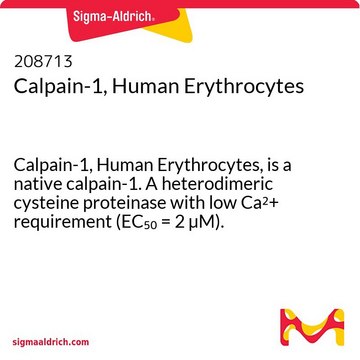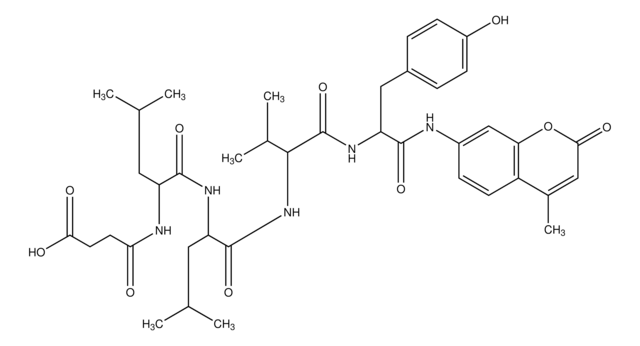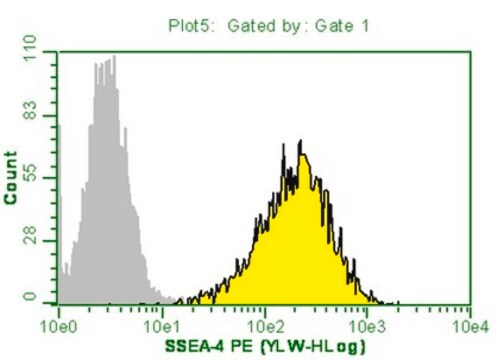QIA120
Calpain Activity Assay Kit, Fluorogenic
About This Item
Produtos recomendados
uso
sufficient for 96 tests
Nível de qualidade
embalagem
pkg of 1 96-well plate(s)
fabricante/nome comercial
Calbiochem®
condição de armazenamento
OK to freeze
avoid repeated freeze/thaw cycles
protect from light
entrada
sample type serum
sample type plasma
sample type cell lysate
método de detecção
fluorometric
Condições de expedição
wet ice
Descrição geral
Componentes
Advertência
Especificações
Nota de preparo
Armazenamento e estabilidade
Nota de análise
Calpain 1
Outras notas
Glading, A., et al. 2000. J. Biol. Chem.275, 23908.
Ishikara, I., et al. 2000. Neurosci. Lett.279, 97.
Nakagawa, T. and Yuan, J. 2000. J. Cell Biol.150, 887.
Pariat, M., et al. 2000. Biochem. J.345, 129.
Pink, J.J., et al. 2000.Exp. Cell Res.255, 144.
Wang, K.K. 2000. Trends Neurosci.23, 20.
Reddy, R.K., et al. 1999. J. Biol. Chem.274, 28476.
Leist, M., et al. 1998. Mol. Pharmacol.54, 789.
Melloni, E., et al. 1998. J. Biol. Chem.273, 12827.
Villa, P.G., et al. 1998. J. Cell Sci.111, 713.
Wood, D.E., et al. 1998. Oncogene17, 1069.
Kubbutat, M.H. and Vousden, K.H. 1997. Mol. Cell Biol.17, 460.
Molinari, M. and Carafoli, E. 1997. J. Membr. Biol.156, 1.
Sorimachi, H., et al. 1997. Biochem. J.328, 721.
Squier, M.K. and Cohen, J.J. 1997. J. Immunol.158, 3690.
Aoki, K., et al. 1986. FEBS Lett.205, 313.
Ohno, S., et al. 1986. Nucleic Acid Res.14, 5559.
Informações legais
Palavra indicadora
Danger
Frases de perigo
Declarações de precaução
Classificações de perigo
Repr. 1B
Código de classe de armazenamento
6.1C - Combustible acute toxic Cat.3 / toxic compounds or compounds which causing chronic effects
Certificados de análise (COA)
Busque Certificados de análise (COA) digitando o Número do Lote do produto. Os números de lote e remessa podem ser encontrados no rótulo de um produto após a palavra “Lot” ou “Batch”.
Já possui este produto?
Encontre a documentação dos produtos que você adquiriu recentemente na biblioteca de documentos.
Nossa equipe de cientistas tem experiência em todas as áreas de pesquisa, incluindo Life Sciences, ciência de materiais, síntese química, cromatografia, química analítica e muitas outras.
Entre em contato com a assistência técnica








![(R)-N4-Hydroxy-N1-[(S)-2-(1H-indol-3-yl)-1-methylcarbamoyl-ethyl]-2-isobutyl-succinamide >95% (HPLC)](/deepweb/assets/sigmaaldrich/product/structures/381/824/43d65d68-be23-4584-80e5-31662c7f8f4a/640/43d65d68-be23-4584-80e5-31662c7f8f4a.png)
